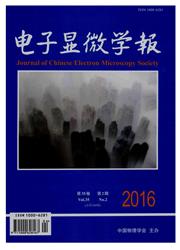

 中文摘要:
中文摘要:
本文采用电子能量损失谱(EELS)研究了不同商用钢铁材料的晶界,计算了晶界处和晶粒内铁原子的3d电子占据态密度,并将其和晶界性质以及材料的宏观断裂性能相联系。结果表明,当样品晶界处铁的3d电子占据态密度高于晶粒内时,晶界结合强度低于晶内,晶界表现出脆性,材料的冲击断裂方式主要为脆性的沿晶断裂;反之,如果样品晶界处铁的3d电子占据态密度低于晶粒内时,晶界结合强度高于晶内,晶界表现出韧性,材料的冲击断裂方式主要为脆性的穿晶断裂。还发现元素在晶界的偏析对晶界结合强度影响很大。
 英文摘要:
英文摘要:
Electron energy loss spectroscopy (EELS) was used to study grain boundaries (GB) in steels. The normalized 3d occupancies of states of irons both in bulk and at grain boundary were calculated from the EELS spectra and were related to the change in the bonding of grain boundaries and the fracture mode of the steels. It was found that if the GB has a higher occupancy of 3 d states of iron than that of the bulk, the sample has a weak bonding of GB and tends to have an intergranular fracture. Otherwise if the GB has a lower occupancy of 3 d states of iron than that of the bulk, the sample has a strong bonding of GB and tends to have a transgranular fracture. The change in occupancies of 3d states of iron at GB is attributed to the P segregation at GB.
 同期刊论文项目
同期刊论文项目
 同项目期刊论文
同项目期刊论文
 期刊信息
期刊信息
